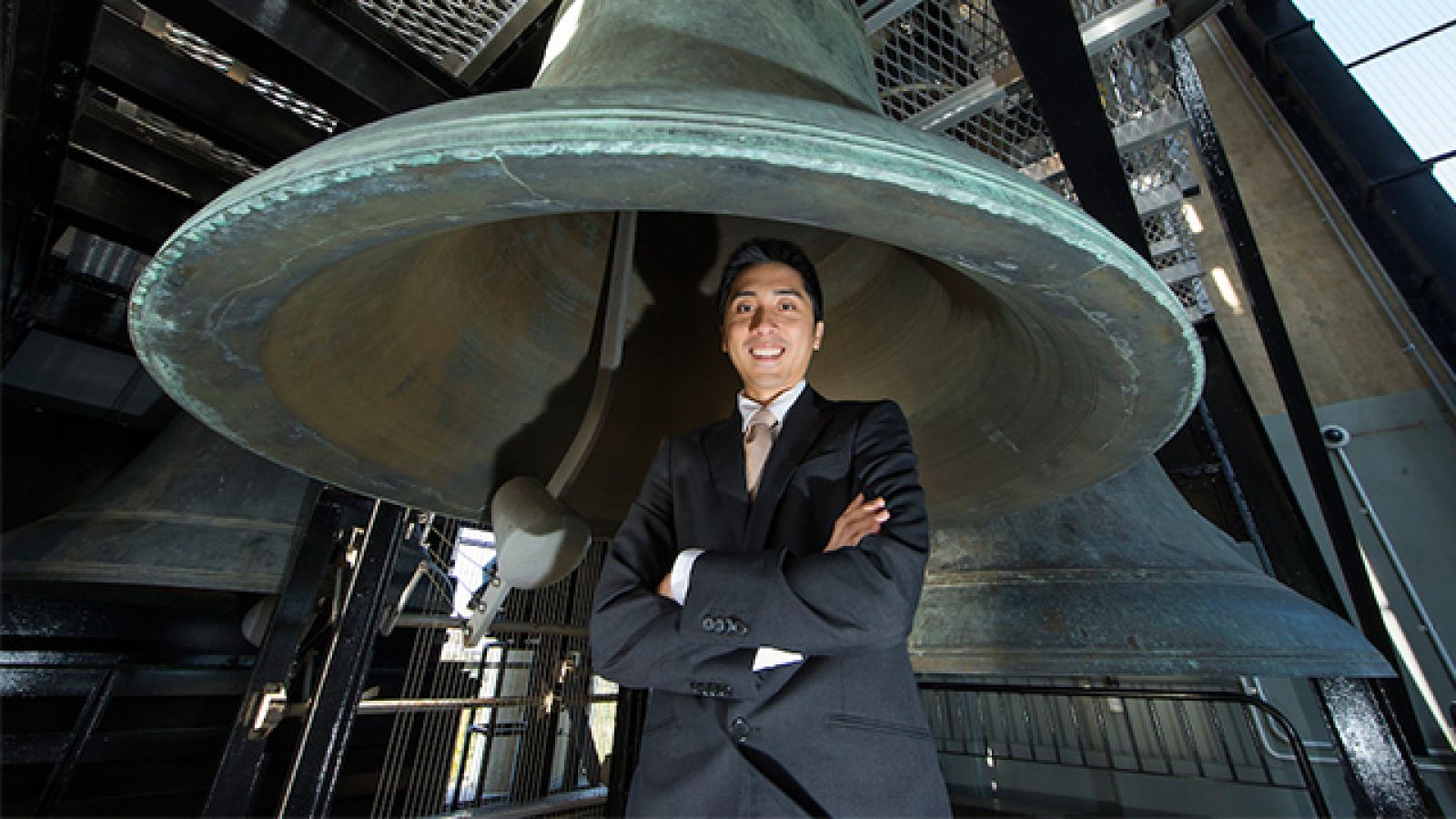World premiere of new Australian Carillon music

Dr Thomas Laue. Image: Stuart Hay, ANU
A collection of 10 new works for carillon will have their world premiere this Friday as part of a collaboration between The Australian National University (ANU) and the National Capital Authority, which manages the National Carillon in Canberra.
Australian Miniatures for Carillon is the brainchild of the National Carillion’s senior carillonist Dr Thomas Laue from the ANU School of Music, and Ms Lyn Fuller, lead carillonist and President of the Carillon Society of Australia.
“With its uniquely local flavour, Australian Miniatures for Carillon is an important body of work for Australia,” Dr Laue said.
“It is the first collection of carillon music ever put together in Australia, by Australian composers.”
Dr Laue and Ms Fuller brought together leading Australian composers to develop the works, including Gerard Brophy, Judith Clingan AM, Andrew Ford, Matthew Hindson AM, Elena Kats-Chernin, Becky Llewellyn, Kate Moore, Larry Sitsky AO, Jessica Wells, and Dr Chris Sainsbury.
The pieces, called miniatures, are only two to five minutes in length, and will be played at special concerts at the National Carillon this Friday, Saturday and Sunday as part of the Canberra International Music Festival.
They will then be played in Barcelona at the World Carillon Federation Congress on 3 July, and then in towns throughout Belgium later that month.
One of the pieces, As Wild As All Get Out, was written by ANU School of Music composition lecturer Dr Chris Sainsbury. It is based on a version of the poem The Wild Colonial Boy, which was found in Tarcutta shearing sheds in southern NSW from about 1895.
“It’s very different to the common version,” Dr Sainsbury said.
“For me it’s attractive, as the tune is relatively local to Canberra, and it satisfies my bent of articulating a sense of a region in my music. Part of it is sad in mood, and part wild in mood. The wild colonial boy I feel must have been a bit of both himself.”
Dr Laue said the carillon was a challenging instrument.
“Playing the carillon is physically challenging, with both hands and feet involved,” he said.
“Some combinations of notes are just not possible as the stretch of arm and leg won’t allow it.
“Also some combinations of notes can sound discordant because of the harmonic overtones of the bells. That’s why workshopping the pieces – most of which was carried out via Skype - was so important,” he said.
The project is a collaboration between the ANU School of Music, The National Capital Authority, the Canberra International Music Festival and the World Carillon Federation, with support from the Australia Council for the Arts.
The National Capital Authority manages the National Carillon and its program of commissions, performances and education. The National Carillon is one of the largest in the world with 55 bronze bells.
Australian Miniatures for Carillon can be heard around Lake Burley Griffin on Friday 5 May from at 5pm, Saturday 6 May at 11am and Sunday 7 May at 12.30pm.